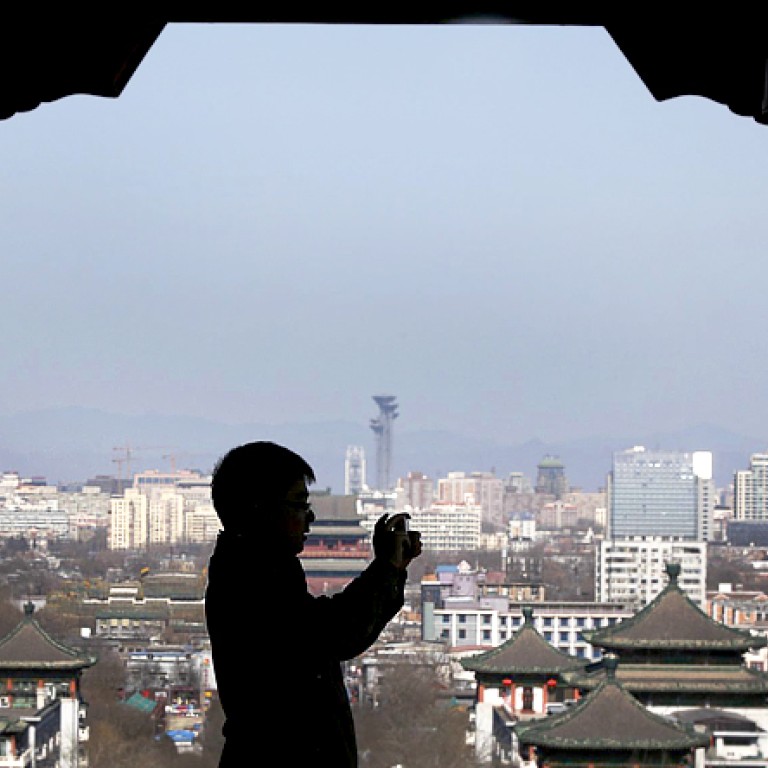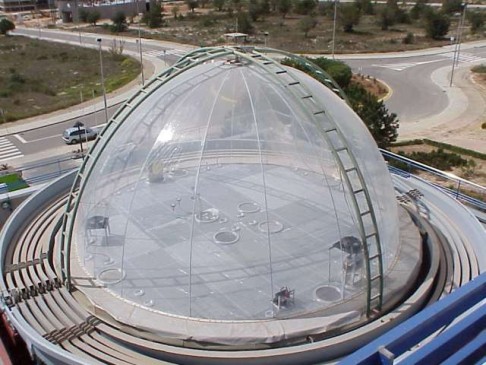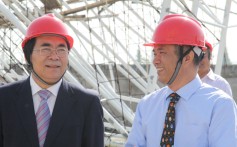
China to build ‘world’s largest’ smog chamber to solve pollution puzzle
Backing for huge research facility as effort to beat air pollution stepped up
The central government has approved the construction of a facility that creates artificial smog to allow scientists to devise new ways to reduce air pollution.
Plans for the so-called "smog chamber" were apparently fast-tracked as the country continued to choke under heavy smog. The proposed Huairou complex will rival the world's largest atmospheric simulation facility, the European Photoreactor, Euphore.
Professor He Hong, a researcher with the Chinese Academy of Sciences and the lead scientist of the project, said that when completed the Huairou smog chamber would be the largest in the world. The Chinese chamber will be able to use 600 cubic metres of polluted air for tests - exceeding Euphore's capacity by 50 per cent.
Watch: Chinese weather officials: 15 per cent of China blanketed in heavy smog
Professor He stressed this was not for bragging rights, but for science. "Size matters. The larger a smog chamber, the smaller the 'wall effect'," he said, referring to the negative impact of a limited physical enclosure on simulation and data quality.
The smog chamber, a project long hoped for by scientists, features two hemispherical vessels that can create conditions similar to smog.
The central government agreed to grant the project more than five hectares of land - about the size of seven soccer fields - in the Huairou district of Beijing, and 500 million yuan (HK$633 million) in funding.
Construction is scheduled to begin in 2016 but will probably start earlier as the government is losing patience in the battle against smog and is pushing scientists for results.

"We are under a lot of pressure to provide immediate answers and solutions, but scientific research takes time, and some sophisticated problems cannot be solved overnight," He said. "I hope people can understand and give us some time."
Scientists are still scratching their heads about the causes of smog in China. There is a lack of precise understanding of the chemical reactions in the atmosphere that give rise to most of the fine particulates in smog. Many research teams have focused on emissions, leading to government measures such as limiting the number of cars on the road or shutting down factories, but others say the effect of such restrictions is negligible.
The theories and mathematical models developed by scientists in the last few decades to explain smog in Europe and the United States turned out to be inadequate when applied to China's cities.
In the Huairou facility, by pumping different mixtures of pollutants into each of the vessels, the researchers will be able to study their chemical reactions, under sunlight, in detail.
The twin chamber design will allow scientists to make side-by-side comparisons of test results.
We are under a lot of pressure to provide immediate answers
He said the biggest challenge of the project was not building the chamber, but equipping it with state-of-the-art research devices.
To fully monitor and record the sophisticated physical or chemical reactions in the chamber requires much advanced scientific equipment that needs to be purchased or developed.
The project had been approved by the National Development and Reform Commission. With the project backed by the Chinese Academy of Sciences, the smog chamber's launch could be brought forward.
Professor Hu Min, who runs a smaller smog chamber at Peking University's College of Environmental Sciences and Engineering, said the scientific community was eagerly awaiting the completion of the Huairou facility. But, she cautioned, the "greater the size, the greater the challenges". It was too early to speculate on the chamber's performance as most of the technical details had not been made public, Hu said.
The smog chamber is only part of the Chinese government's bid to solve the smog problem by investing huge sums into research and technology.
Numerous scientists have been mobilised nationwide, especially those from top research institutes and universities in smog-hit areas such as Beijing and Shanghai, to look into the issue and come up with solutions. Research teams have been set up, with some larger teams receiving hundreds of millions of yuan in funding.
Some of the scientists have never been involved in an air pollution research before.

The scientists, coming from various fields, were urged to take tackling smog as seriously as "an earthquake", according to a report on the CAS website.
One physicist from CAS said he had never seen such urgency about a scientific study before. "We have been told to drop whatever we have in hand and work on the smog issue, as if a meteorite is about to strike the earth," he said, declining to be named.
"The budget is so big that money will never be a problem," the scientist said. "If an issue can be solved by money, it is relatively easy. Unfortunately, it does not apply to smog."

